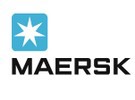In recent years, cold chain logistics has experienced a significant surge around the world, and it's showing no signs of slowing down – with the market set to grow from 292.89 billion USD in 2022 to a projected 410.79 billion USD by 2028.
This expansion is fuelled by the rising demand for warehousing, particularly after the e-commerce boom in the wake of the Covid-19 pandemic. Amidst this growth, Europe stands out, facing warehouse capacity challenges that call for innovations and investments in the cold storage sector. In this article, we dive into the current state of cold storage facilities in Europe, highlighting key considerations and challenges, and continue to explore Rotterdam, a location offering opportunities for businesses to streamline their supply chains, enhance speed to market, and reduce costs.
The long-distance challenge
The cold chain logistics market in Europe is projected to reach 113.8 billion USD in 2025, up from 97.79 billion in 2023. However, European countries lag behind global leaders like the US, China, and India in refrigerated warehouse space, underscoring the need for further development. Plus, as industries requiring cold chain logistics - such as fresh food and vegetables, healthcare, and biopharma - continue to grow, the demand for efficient storage solutions becomes increasingly pressing.
Having access to cold storage closer to ports and final markets would provide businesses with the opportunity to add speed and simplicity to their supply chains – which in the business of fresh produce is crucial.
The growing need for refrigerated space ties into the myriad of challenges the cold chain industry is facing in Europe, with shippers grappling with issues like proper handling (63%), product packaging (31%), and adequate storage (31%). When the integrity and shelf life of products like fresh fruit and veg, perishables, frozen goods, and pharmaceutical products depend on precise temperature levels, every additional step in the handling process comes with the potential to unbalance the temperature level, resulting in product and profit loss.
Rotterdam's role in reshaping cold chain logistics
In addressing the challenges faced by the cold chain logistics industry in Europe, Rotterdam, home to Europe's largest container port, shows a bright future ahead. The Port of Rotterdam, as a major logistics hub in Northern Europe, boasts an extensive intermodal network encompassing road, rail, and barge connections with the rest of the continent. This interconnectivity positions Rotterdam as a gateway to the rest of Europe – and because the final destination of cargo often goes beyond the hinterland and stretches further into Germany, Belgium, and France, it enables businesses to reach a wider market quickly and efficiently.
As such, Rotterdam was the logical choice for an investment that will address the existing challenges and offer simpler and more integrated supply chain solutions. Recently, Maersk announced the construction of a new cold store facility in the Port of Rotterdam, located next to the Maasvlakte II terminal. The new facility goes beyond mere cold storage, offering integrated solutions, including customs services, contamination checks, quality inspection, and repackaging – all running on renewable energy sources. For more information:
For more information:
Rainer Horn
A.P. Moller – Maersk
Tel.: +49 1525 452 14 62
Email: rainer.horn@maersk.com
www.maersk.com
